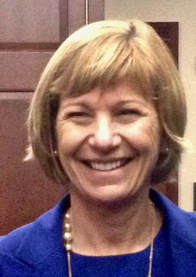
I walked into my bank and immediately I had trouble breathing and my head ached. A scent that most would find pleasant filled the air. I put on a mask to help manage my situation and conducted my business as quickly as possible.
I could go on and on with other examples. The post office, the bank, and others all used “air fresheners.” The managers were unaware of potential health issues for some of their employees and customers. Percentages in surveys vary but 12-20% of the general population have multiple chemical sensitivities.
Dr. Anne Steinemann of the University of Melbourne leads research on and writes about the little known “unintended effects and risks for the indoor environment and human health” from air fresheners. She equates the problem of air fresheners to second-hand smoke. Managers and human resource professionals should become familiar with her work.
In a 2017 article in the journal Building and Environment, she poses and answers ten questions about air fresheners. Much of the article details the technical results of chemical analyses. I will share the questions and brief answers here. I recommend the full article for more information and details.
1. “What are air fresheners?”
- “Consumer products that emit a fragrance to provide an aroma to a space, to mask an odor, or both . . . designed to impart an aromatic fragrance or a masking fragrance into the air. . . “
- Includes many forms such as plug-ins, solids, wick diffusers, and even scented candles.
- “Throughout society, by individuals, industries, and institutions.”
- Global market “exceeds US $10 billion."
- “Over 100 different chemicals, including volatile organic compounds.”
- Fragrance mixture more important than delivery method.
- “Contribute to indoor hazardous air pollutants, both through direct emissions and secondary reaction products.”
- Emit high concentrations of odorless chemicals, such as formaldehyde.
- “Air freshener exposure, even at low levels, have been associated with a range of adverse health effects, which include migraine headaches, asthma attacks, breathing difficulties, respiratory difficulties” and so forth.
- 20.4% of U.S. population “report health problems when exposed to air fresheners and deodorizers.”
- Specific chemicals “emitted from air fresheners have been associated with adverse effects to the neurological, cardiovascular, respiratory, reproductive, immune, and endocrine systems, and with cancer.”
- Acetaldehyde is “classified as a carcinogenic hazardous air pollutant in US.”
- The industry is not required to “and typically do not.”
- No law “requires disclosure of all ingredients in air fresheners.”
- “Striking differences exist between chemicals listed and chemicals emitted.“
- In one analysis, an air freshener emitted four compounds, not listed, for which the U.S. Environmental Protection Agency states “no safe threshold of exposure.”
- No regulatory definition of what is a green air freshener.
- In tests, found no significant differences.
- “Individuals may experience adverse effects without their awareness or agreement.”
- People with medically documented adverse chemical sensitivities may request accommodations under the Americans with Disabilities Act.
- Surveys indicate majority of populations prefer scent-free environments in public places, workplaces, hotels, airplanes, and such.
- Fragrance-free policies in the “workplaces, schools, hospitals, and other indoor environments.”
- Once air fresheners are removed, compounds absorbed into room furnishings may be reemitted.
- Question: “Whether perceived benefits are outweighed by the potential costs to personal and public health, and profits.”
- “The use of an air freshener can pose potential liability, if it triggers adverse or potentially disabling health effects in individuals.”
- Here Steinemann lists 10 questions for researchers, such as “What is the public awareness of air freshener emissions?”
My take-aways:
Steinemann’s research is critically important. There is little awareness of the health implications of air fresheners and fragrances. My guess is fragrance-free workplaces probably have higher productivity, but that is just a hypothesis. Examples of fragrance-free policies can be found online, such as this one suggested by the American Lung Association.
Steinemann, A. (2017). Ten questions concerning air fresheners and indoor built environments. Building and Environment, 1(1): 279-284.
Image, "Close-up of a yellow rose and other flowers," by Petr Kratochvil. Obtained from http://www.freestockphotos.biz/stockphoto/6122
Public domain. https://creativecommons.org/publicdomain/zero/1.0/
© John Ballard, PhD, 2018. All rights reserved.
Author of Decoding the Workplace, BEST CAREER BOOK Next Generation Indie Book Awards 2016.
_________________________
"Decoding the Workplace: 50 Keys to Understanding People in Organizations is as informed and informative a read as it is thoughtful and thought-provoking. . . Decoding the Workplace should be considered critically important reading for anyone working in a corporate environment." —Midwest Book Review

 RSS Feed
RSS Feed